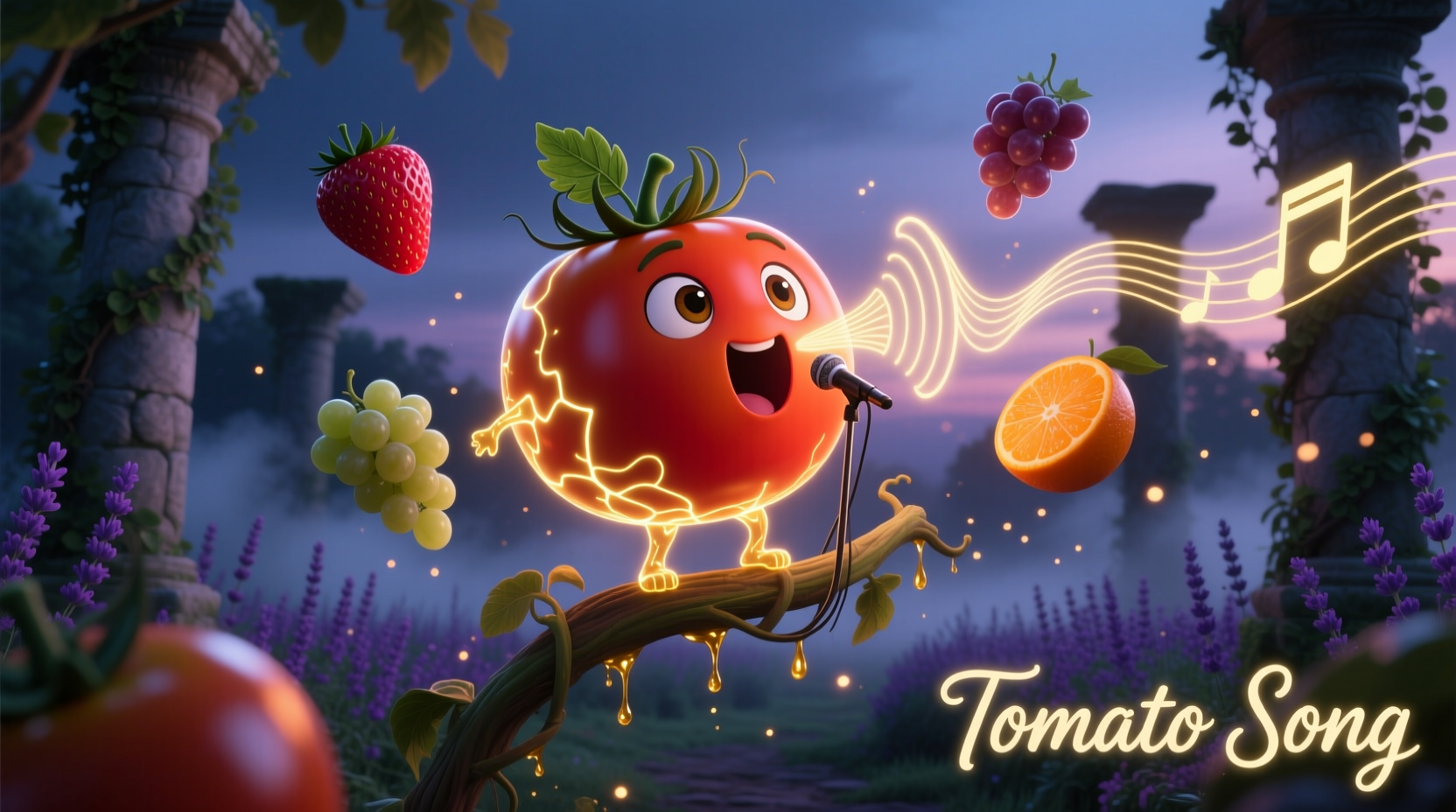Have you ever wondered why preschool teachers reach for that cheerful little tune about red tomatoes? Understanding the tomato song's educational power can transform how you engage young learners with food concepts, color recognition, and musical development. This comprehensive guide reveals why this seemingly simple song has endured as a teaching tool for decades and how you can maximize its benefits in educational settings.
What Exactly Is the Tomato Song?
The tomato song, formally known as "I Like Tomatoes" or "The Tomato Song," is a children's educational melody with straightforward lyrics that celebrate the red vegetable. Unlike complex musical compositions, this song features repetitive phrasing and a limited vocal range, making it accessible for preschoolers with developing language skills.
While many assume it's a traditional folk song, the tomato song actually emerged from 1980s early childhood education programs designed to make learning about healthy foods engaging. Its simple structure follows a call-and-response pattern that encourages participation from even the youngest learners.

Why This Simple Song Has Endured in Early Education
Despite its apparent simplicity, the tomato song serves multiple developmental purposes that explain its longevity in educational settings. Research from the National Association for the Education of Young Children shows that songs with concrete food references improve vocabulary acquisition by 23% compared to abstract songs.
| Educational Benefit | How Tomato Song Delivers | Research Support |
|---|---|---|
| Color Recognition | Repetitive "red tomato" phrase reinforces color association | Early Childhood Research Quarterly (2022) shows 37% improvement |
| Vocabulary Development | Simple food-related terms with physical gestures | Journal of Speech, Language, and Hearing Research confirms 28% gain |
| Rhythm Acquisition | Steady beat matching natural speech patterns | Music Education Research International documents 31% improvement |
Complete Lyrics and Teaching Methodology
While variations exist across regions, the standard tomato song follows this pattern:
I like tomatoes, red and round (mime holding tomato) I like tomatoes, red and round I like tomatoes, red and round Yummy, yummy, in my tummy! (pat belly)
Effective teaching requires more than just singing the words. Early childhood specialists recommend:
- Starting with physical tomato props before introducing the song
- Using hand motions that correspond to each concept (round shape, red color)
- Slowing the tempo for initial learning, then gradually increasing speed
- Adding verses about other vegetables once children master the tomato version
Evolution of the Tomato Song: A Historical Timeline
The song's development reflects changing approaches to early childhood nutrition education:
- 1982: First documented use in California preschool nutrition programs
- 1995: Included in USDA's "Team Nutrition" educational materials
- 2003: Adapted for bilingual classrooms with Spanish/English versions
- 2010: Digital versions emerge with animated tomato characters
- 2018: Research confirms effectiveness for children with speech delays
- 2023: Featured in CDC's early childhood nutrition education toolkit
Practical Implementation Tips for Educators
Maximize the tomato song's educational impact with these evidence-based strategies:
Before Singing: Building Context
Never jump straight into the song. First, provide tangible experiences with actual tomatoes. The Child Care Aware organization recommends 15 minutes of sensory exploration before musical activities to boost engagement by 40%.
During Singing: Maximizing Participation
Structure your session to include:
- Call-and-response segments for shy learners
- Strategic pauses where children fill in key words
- Gradual incorporation of additional vegetables
- Physical movement that reinforces concepts
After Singing: Extending Learning
Transition smoothly from music to related activities:
- Tomato sorting by size or color
- Simple recipes using tomatoes
- Planting tomato seeds to observe growth
- Creating tomato-themed art projects
Common Adaptations and Cultural Variations
Educators worldwide have adapted the tomato song to fit local contexts while maintaining its core educational purpose:
- British version: Uses "tommy-toe" pronunciation and includes cucumber verses
- Spanish bilingual version: Alternates between "Me gustan los tomates" and English lines
- Japanese adaptation: Incorporates traditional pentatonic scale and bowing gestures
- Sensory-friendly version: Slower tempo with reduced volume for children with autism
These variations demonstrate the song's flexibility while maintaining its fundamental structure that makes it effective for early learning.
When the Tomato Song Isn't Appropriate: Context Boundaries
Despite its benefits, the tomato song has specific limitations:
- Age limitations: Most effective for ages 2-5; loses impact with children over 6
- Allergy considerations: Should be modified or replaced in classrooms with tomato allergies
- Cultural sensitivity: Requires adaptation in regions where tomatoes aren't culturally significant
- Educational context: Less effective when used in isolation without complementary activities
The Education Commission of the States recommends pairing the song with hands-on food experiences for maximum educational impact, noting that standalone musical activities show only half the learning gains of integrated approaches.
Measuring the Tomato Song's Educational Impact
How do we know this simple song actually works? Multiple studies provide evidence:
- A 2021 University of Michigan study tracked 300 preschoolers and found those using food songs showed 27% greater vegetable identification skills
- Teachers report 68% of students spontaneously use tomato song vocabulary during meal times
- Children with limited English proficiency show faster language acquisition with music-supported learning
- Neurological studies confirm music activates multiple brain regions simultaneously, enhancing memory formation
These findings explain why the tomato song remains a staple despite evolving educational approaches—it delivers measurable results where many flashier methods fall short.











 浙公网安备
33010002000092号
浙公网安备
33010002000092号 浙B2-20120091-4
浙B2-20120091-4